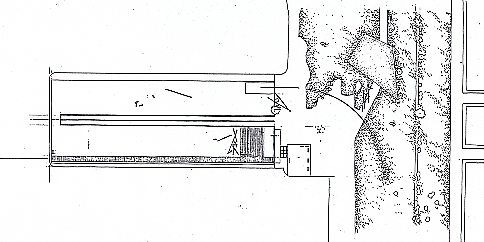- "Folly"
or installation built at apparent center of the park area. Seating
and a concession provided. Folly is visible from all areas of
the park and acts as a landmark within it.
- There
is a smaller folly at the outer end of the pier
|
- Naturalizing
areas remain
- Baseball
diamond incised into the naturalizing area, thus highlighting
the naturalization process and defining the programmed recreation
area
|
-
Steel "arc" (Serra-like) installed mirroring the apparent curve
of Boston harbor visible from the pier. The arc is made of the
same steel and with the same process as old ship hulls and helps
recall the precontainer shipping era and the ships that used to
dock at the pier. The arc begins seat high and reaches about seven
feet, but is cut in places to allow movement on the site and to
ensure public safety (no large hidden areas).
|

